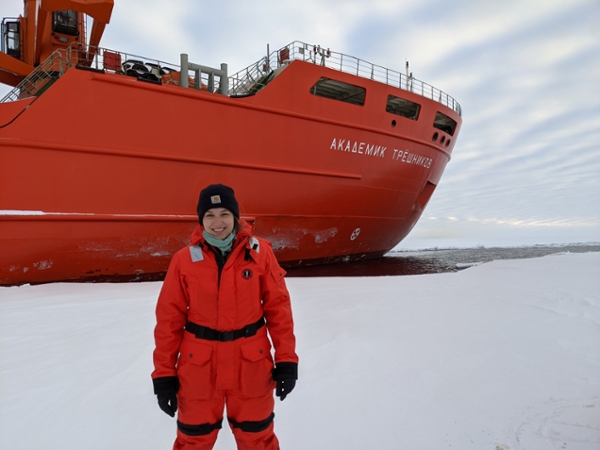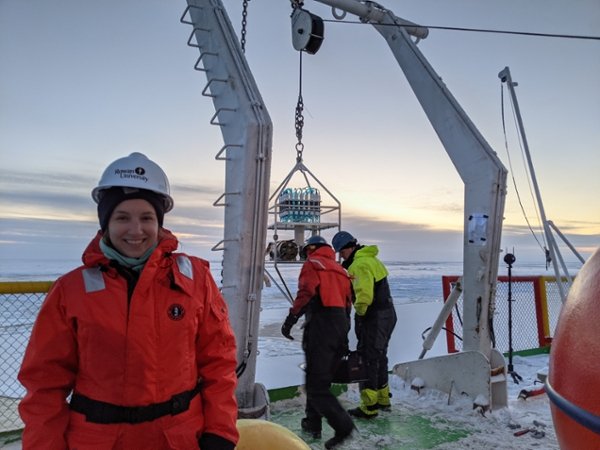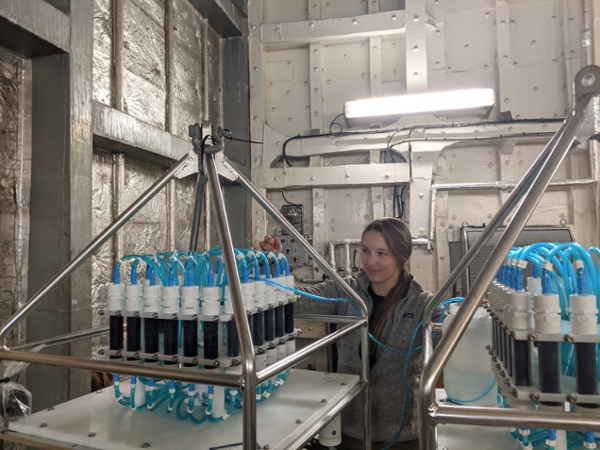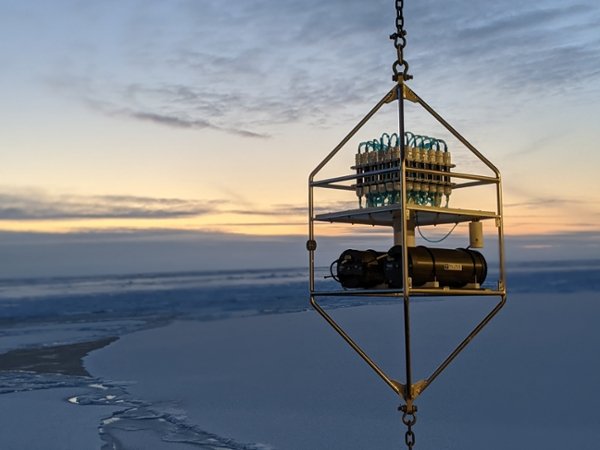Forty days at sea: researcher studies Arctic water chemistry to gauge climate change impacts
Forty days at sea: researcher studies Arctic water chemistry to gauge climate change impacts
The premise of her work sounds like the subplot in a Cold War spy movie: American scientist studies radioactive isotopes aboard Russian icebreaker.
But fiction this is not.
Dr. Lauren Kipp, an assistant professor of Environmental Science in the School of Earth & Environment, spent roughly six weeks last summer aboard the Russian icebreaker Akademic Tryoshnikov collecting Arctic Ocean water samples to determine changes in radium, a naturally occurring radioactive isotope.
Kipp said increasing radium levels in the waters there indicate changes that may be triggered by the planet’s warming.
“I study naturally occurring radioactivity, which is in low levels all around us,” she said. “Radium isotopes tell us about the exchange of elements that occurs when the ocean comes into contact with land and continental shelf sediments. It acts as a beacon telling us that there has been an addition of elements with a similar shelf source, such as the nutrients that support life in the oceans.”
During a research trip in 2015, Kipp said, she and other researchers determined a doubling of radium in waters near the North Pole since 2007. She suspects this may have been caused by the loss of sea ice coverage over shallow Arctic seas. Without the ice to act as a barrier, winds can mix the water and cause elements to be released from the underlying sediments into the ocean. Along with radium, these elements include important nutrients that support life in surface waters.
The rise in radium signals that nutrient concentrations might also have increased, which could affect ocean biology, starting with phytoplankton at the bottom of the food chain, and that could have real consequences.
“There could be ramifications all the way up the food chain,” Kipp said.
International research expedition
Kipp, who joined some 30 scientists from the U.S., Russia, Japan and Denmark on the research trip this summer, will use samples collected from it and future expeditions to determine if the levels of radium have continued to change since 2015.
“Our main goal is to monitor the radium levels to see if they are changing, which will give us an idea of how land-ocean exchange is changing and help predict how climate change may continue to affect this region,” Kipp said.
Kipp noted that the Arctic is the fastest warming region on earth and that fluctuations there can portend changes for the rest of the planet.
Now back on campus, Kipp will use a gamma ray detector in Discovery Hall to analyze the 120 samples she returned with.
Kipp, who teaches “Oceans in Crisis,” “Oceans,” and “Environment in the Headlines,” said she’ll return to the Arctic in two years to collect more samples and retrieve two submersibles she left anchored just below the sea surface this summer.
“They’ll collect samples every month until we go back,” Kipp said. “This high-resolution sampling will help us separate seasonal fluctuations from longer term changes that may be linked to climate change.”
Her current research is funded through a National Science Foundation-Office of Polar Programs grant of $350,203 (total funding of $1,055,324, which is shared with researchers at Woods Hole Oceanographic Institution [WHOI] in Massachusetts).
Learn more about the research Dr. Kipp is conducting in collaboration with faculty at WHOI.





